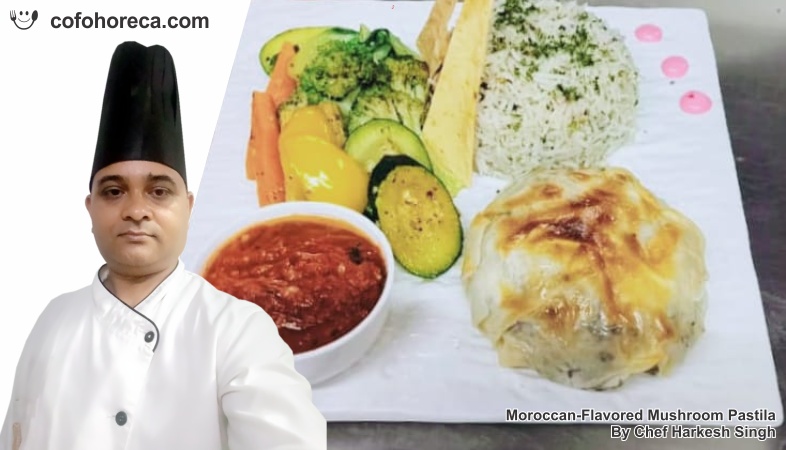Culinary Tourism: Exploring Destinations Through Food
This form of tourism goes beyond merely tasting local dishes; it delves into the stories, people, and practices that define a destination’s culinary heritage.
Culinary tourism has emerged as a dynamic and enriching way
to explore destinations, offering travelers the chance to experience a region’s
culture, traditions, and history through its food. This form of tourism goes
beyond merely tasting local dishes; it delves into the stories, people, and
practices that define a destination’s culinary heritage. From bustling street
food markets to high-end restaurants, culinary tourism provides a sensory
journey that reveals the heart of a place through its flavors and aromas.
At the core of culinary tourism is the understanding that food is a reflection of a region’s history and cultural evolution. Traditional recipes often tell tales of migration, trade, and local resources. For instance, the spices in Indian cuisine narrate the story of ancient trade routes, while the prevalence of seafood in Mediterranean dishes speaks to the longstanding relationship between these communities and the sea. By savoring these foods, travelers gain insight into the geographic and historical influences that have shaped local cuisines.
One of the most engaging aspects of culinary tourism is the opportunity to participate in hands-on experiences. Cooking classes, farm tours, and food festivals allow travelers to immerse themselves in the local culinary scene. For example, in Italy, a pasta-making class can introduce tourists to the art of crafting fresh pasta, while a visit to a vineyard in France offers a deep dive into the world of wine production. These activities not only provide practical skills but also foster a deeper appreciation for the effort and tradition behind each dish.
Street food markets are a vibrant component of culinary tourism, offering an authentic taste of local life. These markets are often the best places to sample traditional, everyday foods that might not be found in upscale restaurants. From the bustling hawker centers of Singapore to the lively night markets of Thailand, street food offers an array of flavors and textures that are integral to the local diet. Moreover, engaging with vendors and observing the preparation of food in these settings provides a glimpse into the social fabric of the community.
Culinary tourism also plays a significant role in supporting local economies. By patronizing local eateries, markets, and food producers, tourists contribute to the livelihoods of farmers, chefs, and artisans. This economic support helps preserve culinary traditions and encourages the sustainable production of local ingredients. Additionally, culinary tourism can drive demand for heritage foods and traditional cooking methods, fostering a sense of pride and continuity within the community.
Food and drink pairings are another highlight of culinary tourism. Exploring the symbiotic relationship between local dishes and beverages, such as wine, beer, or spirits, can enhance the dining experience. For example, pairing sushi with sake in Japan or enjoying tapas with a glass of sherry in Spain showcases the harmonious interplay between food and drink. These pairings often highlight the meticulous attention to detail and the cultural significance of dining practices in a region.
In recent years, the concept of farm-to-table dining has gained prominence in culinary tourism. This approach emphasizes the use of fresh, locally-sourced ingredients and sustainable farming practices. Visitors to regions like California’s wine country or the organic farms of New Zealand can enjoy meals that highlight seasonal produce and artisanal products. Farm-to-table experiences often include tours of farms, orchards, and vineyards, providing a deeper connection to the source of the food and a greater understanding of sustainable agriculture.
The rise of culinary tourism has also led to the proliferation of food-themed travel itineraries and tours. These specialized tours are designed to cater to food enthusiasts, offering curated experiences that highlight the culinary gems of a destination. From truffle hunting in Italy to exploring the spice markets of Morocco, these tours provide a structured yet immersive way to experience a region’s food culture. Expert guides, often chefs or food historians, add depth to these tours by sharing their knowledge and passion for local cuisine.
Furthermore, culinary tourism is increasingly recognized for its potential to promote cultural exchange and understanding. Sharing a meal is a universal gesture of hospitality, and through food, travelers can connect with locals on a personal level. These interactions often lead to meaningful conversations and the exchange of stories, breaking down cultural barriers and fostering mutual respect. Whether it’s dining in a family-run trattoria in Tuscany or participating in a communal feast during a festival in India, these experiences highlight the unifying power of food.
Culinary tourism offers a rich and multifaceted way to explore destinations. By delving into local cuisines, travelers can uncover the cultural, historical, and social fabric of a place. Through hands-on experiences, street food adventures, and farm-to-table dining, culinary tourism provides a deeper connection to the destinations visited. This form of tourism not only satisfies the palate but also enriches the mind and soul, offering a unique perspective on the world through the lens of food.
.png)





















 at The Aviyaan.jpeg)






